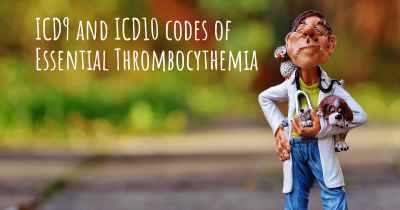What is the life expectancy of someone with Essential Thrombocythemia?
Life expectancy of people with Essential Thrombocythemia and recent progresses and researches in Essential Thrombocythemia

Essential Thrombocythemia (ET) is a rare chronic blood disorder characterized by the overproduction of platelets in the bone marrow. The life expectancy of someone with ET can vary depending on various factors such as age, overall health, and response to treatment. With appropriate medical care and management, individuals with ET can lead relatively normal lives. However, complications such as blood clots, bleeding, or progression to myelofibrosis or acute leukemia can occur in some cases, which may impact life expectancy. It is crucial for individuals with ET to work closely with their healthcare team to monitor their condition, manage symptoms, and minimize potential complications.
Essential Thrombocythemia (ET) is a rare chronic blood disorder characterized by the overproduction of platelets in the bone marrow. Platelets are essential for blood clotting, and an excessive number of platelets can lead to various complications.
The life expectancy of someone with Essential Thrombocythemia can vary depending on several factors, including the individual's overall health, age, and the presence of other medical conditions. It is important to note that ET is a chronic condition, and with proper management and treatment, individuals can lead relatively normal lives.
Treatment:
The primary goal of treatment for Essential Thrombocythemia is to prevent blood clotting and reduce the risk of complications. Treatment plans are tailored to each individual based on their specific needs and may include:
- Aspirin: Low-dose aspirin is commonly prescribed to reduce the risk of blood clotting.
- Phlebotomy: This procedure involves the removal of a certain amount of blood to reduce platelet count.
- Medications: Certain medications, such as hydroxyurea or anagrelide, may be prescribed to lower platelet production.
- Other interventions: In some cases, additional treatments like interferon therapy or targeted therapies may be considered.
Prognosis:
The prognosis for individuals with Essential Thrombocythemia is generally favorable, especially with appropriate management and regular monitoring. With early diagnosis and adherence to treatment plans, the risk of complications can be significantly reduced.
However, it is important to note that ET can increase the risk of certain complications, such as:
- Blood clots: Excessive platelets can lead to the formation of blood clots, which can cause serious health issues if they block blood flow to vital organs.
- Stroke: If a blood clot travels to the brain and blocks a blood vessel, it can result in a stroke.
- Heart attack: Blood clots in the coronary arteries can lead to a heart attack.
- Bleeding: Although less common, some individuals with ET may experience abnormal bleeding due to impaired platelet function.
- Transformation to myelofibrosis or leukemia: In rare cases, Essential Thrombocythemia can progress to more serious blood disorders.
Regular monitoring and follow-up:
Due to the potential risks associated with Essential Thrombocythemia, it is crucial for individuals to undergo regular monitoring and follow-up with their healthcare team. This typically involves routine blood tests to assess platelet count and other relevant parameters.
Conclusion:
While it is challenging to provide an exact life expectancy for someone with Essential Thrombocythemia, it is important to focus on managing the condition effectively. With appropriate treatment, lifestyle modifications, and regular monitoring, individuals with ET can lead fulfilling lives and minimize the risk of complications. It is essential for individuals diagnosed with ET to work closely with their healthcare team to develop a personalized treatment plan and maintain a proactive approach to their overall health.
Overall survival is similar to that of a healthy population matched by age and sex during the first decade after diagnosis and may differ thereafter (due to disease complications such as thrombosis, transformation to myelofibrosis, acute leukemia or myelodysplasia). When properly managed and carefully followed, life expectancy of ET patients can be similar to that of general population.
ET is a chronic hematologic malignancy, so it is important for patients to regularly consult with a hematologist and to report any symptoms such as visual disturbances, unexplained pain, numbness, tingling or bruising. Patients who experience symptoms from ET will require treatment.
Posted Aug 11, 2017 by Steve 2685
Posted Feb 7, 2019 by James 3550








